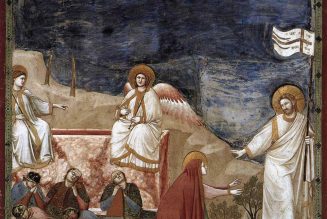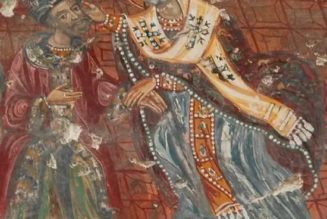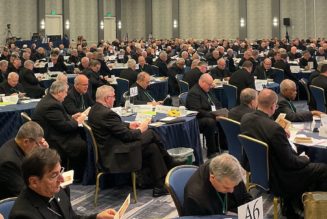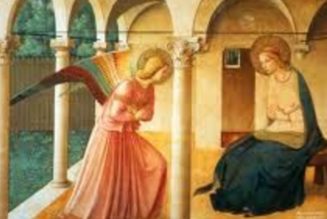
Ten years into the Francis pontificate and the triumphant return of the nuncios goes from strength to strength. And the nuncios are returning the favor, speaking of the Holy Father in increasingly exalted terms.
In his recent consistory announcement, Pope Francis chose to elevate three nuncios to the college of cardinals: Archbishop Christophe Pierre, nuncio to the United States, Archbishop Emil Paul Tscherrig, nuncio to Italy, and Archbishop Agostino Marchetto, already retired. While many cardinals are former nuncios, having gone on to senior curial posts, it is rare that currently serving nuncios are created cardinals. That the Holy Father has done so multiple times is a sign of his preferential option for diplomats.
In 2006, when Pope Benedict XVI appointed Cardinal Tarcisio Bertone secretary of state, it was something of shock to the priests, many of them diplomats, who worked in the Secretariat of State and the diplomatic corps, which it operates. Cardinal Bertone had never been a Vatican diplomat; he had been a professor, a diocesan bishop and secretary for the Congregation for the Doctrine of the Faith. The career diplomats did not appreciate losing their place atop the curial bureaucracy.
So when, within days of his election, Pope Francis told Cardinal Oscar Maradiaga of Honduras that he had decided to call a nuncio — Archbishop Pietro Parolin — to replace Cardinal Bertone, it marked the return of the diplomats to power. Cardinal Parolin, who spent his entire priesthood in the diplomatic service, came to Rome from Venezuela in October 2013.
Even before Cardinal Parolin took up his office, Pope Francis sent another clear signal that the diplomats were back in charge. In his first summer as pope, the Holy Father dismissed the prefect of the congregation for the clergy, Cardinal Mauro Piacenza, relegating him to the relatively low-profile apostolic penitentiary.
Cardinal Piacenza, appointed by Pope Benedict XVI, had been widely viewed as giving orthodox balance to the previous prefect of clergy, Cardinal Claudio Hummes; Cardinal Piacenza had been secretary when Cardinal Hummes was prefect. Cardinal Hummes was a close ally of the new pope, and in dispatching Cardinal Piacenza, Pope Francis gave Cardinal Hummes his revenge on the prelate that had been sent to watch over him.
Who would replace Cardinal Piacenza as the prefect responsible for the clergy the world over, the vast majority of which work in parishes and chaplaincies? Pope Francis chose Archbishop Beniamino Stella, then head of the Pontifical Ecclesiastical Academy, the Roman school for diplomats. In his first months then, Pope Francis decided that not only would the diplomats resume control the Roman Curia, but that the guidance of parish priests would be entrusted to another career diplomat.
Another telling sign came in that first year. Pope Francis restricted the title of “monsignor” to parish priests who were 65 years of older, and discouraged the entire practice of giving honors to parish priests. Yet he preserved it for curial bureaucrats and diplomats, so that 30 or so priests there would still be eligible for honors.
In 2016, when Holy Father wished to show his solidarity with the suffering Syrian people, he did not choose a Syrian bishop to made a cardinal, but rather the nuncio in Damascus, Archbishop Mario Zenari. When St. John Paul II decided to show solidarity with war-torn Bosnia in 1994, he made the archbishop of Sarajevo a cardinal, not an Italian diplomat.
This prominence of nuncios under Pope Francis means that their words bear close attention. Two recent interventions, for example, may be an important sign of how the Holy See’s diplomatic service has been instructed to present the person and mission of the Holy Father.
The two interventions were by Archbishop Pierre, and Archbishop Charles Brown, nuncio in Manila. The Philippines and the United States are the third and fourth largest Catholic countries by population, respectively (Brazil and Mexico are first and second). Archbishops Pierre and Brown have been given prominent assignments before. Now Cardinal-elect Pierre was nuncio in Mexico. Archbishop Brown was sent to Ireland at the height of the abuse crisis there; Pope Benedict XVI personally ordained him for that purpose.
Cardinal-elect Pierre spoke to the U.S. bishops last month in Orlando. He conceded that even after two years “it may be that we are still struggling to understand synodality.” That concession makes the other parts of the speech more remarkable.
Cardinal-elect Pierre asserted that the synodal process on synodality for a synodal Church was launched by “Pope Francis, listening to the promptings of the Holy Spirit.”
“If we have followed the Pope’s lead, then after two years, we should already know some answers to the questions that you are accustomed to hearing from me,” he added. “‘Where are we?’ and ‘Where are we going’?”
Cardinal-elect Pierre claimed that however ambiguous synodality remains, it is a new “way of being Church” that we know is being led by the Holy Spirit, because Pope Francis himself is guided by his promptings.
Cardinal-elect Pierre added that synodality proceeds “with trust that the Spirit still speaks through Peter’s successor.” Surely no one doubts that the Holy Spirit speaks through the Holy Father — or, for that matter, through bishops — in general. The question is whether the Holy Spirit has animated this or that particular decision by this pope or that bishop.
Cardinal-elect Pierre’s claim is that, despite all the confusion, there should be confidence that synodality is of the Holy Spirit because the Holy Father launched it. Indeed, if “we had followed the Pope’s lead” then there would be answers to questions, even if “we are still struggling to understand synodality.”
It is an unusually exalted claim for the Petrine office: That a “new way of being Church” would be launched amid confusion and uncertainty, solely on the conviction that Pope Francis has correctly understood the promptings of the Holy Spirit regarding synodal practices. Formulated that way, it suggests that those who raise questions about the synodal process on synodality for a synodal Church are opposing the Holy Spirit.
Similarly exalted claims were made in the Philippines, in the liturgical context of the solemn feast of Peter and Paul, celebrated annually in the Manila cathedral as the “Pope’s Day Mass”. The Mass in usually celebrated by the nuncio, who preaches, while the cardinal archbishop is present. Thus it was this year, with Archbishop Brown the main celebrant, and Cardinal Jose Fuerte Advincula attending in choir.
When Cardinal Luis Antonio Tagle was in Manila — before being called to Rome in December 2019 by Pope Francis — he introduced a “Pledge of Loyalty to the Pope” into the Mass. It follows the Credo during the Mass.
“Loyalty pledges” are not customary in the liturgy; baptisms, weddings and ordinations do include promises, and there are oaths of fidelity to be made upon assuming certain ecclesial offices. Yet a generalized “pledge of loyalty to the pope” is unusual.
The Manila pledge is comprehensive, with florid phrases unfolding in succeeding strophes. Love is pledged “to Francis, the Vicar of Christ on earth, visible head of the Church, doctor and teacher of all the faithful, guardian of the apostolic tradition.”
The pledge continues: “To the Supreme Pontiff of the Church, courageous leader of the nations, the very personification of the spirit of Vatican II and upholder of the dignity of holy priesthood: To you, Pope Francis, we pledge our obedience!”
Building to a spirited climax, titles are piled upon personal laudations: “To the visible head of the Christian Church, indomitable teacher, leader and father of all the faithful, steadfast in truth in the midst of errors and misunderstanding, unyielding in courage in the midst of danger, and a most reliable beacon of spiritual light and consolation; To you, Pope Francis, we pledge our undying loyalty and filial veneration, now and forever.”
Archbishop Brown led the pledge this year. This June marked the third “Pope’s Day” Mass he has led. In 2021 and 2022, he did not recite the pledge; Cardinal Advincula did so. Archbishop Brown’s predecessor did not lead the pledge in 2019.
Nuncios encounter all sorts of dubious rituals as they travel around, and diplomatic reserve means that they usually accommodate themselves to whatever they find. Yet Archbishop Brown knew about this “loyalty pledge” beforehand and did not lead it in years past; this year he did.
What changed? Did Archbishop Brown, who worked many years with Cardinal Ratzinger at the CDF, consider it a step too far to speak of “the very personification of the spirit of Vatican II” while Benedict XVI was still alive? Or perhaps a directive has come from Rome that makes nuncios more comfortable exalting the Holy Father as a direct instrument of the Holy Spirit worthy of “veneration, now and forever”?
Cardinal-elect Pierre and Archbishop Brown are not junior diplomats learning the ropes. They have been entrusted with some of the most important posts in the diplomatic service. Diplomats signal important shifts with subtle signals. Is that what Cardinal-elect Pierre in Orlando and Archbishop Brown in Manila were doing, promoting a new level of veneration and deference for Pope Francis?








